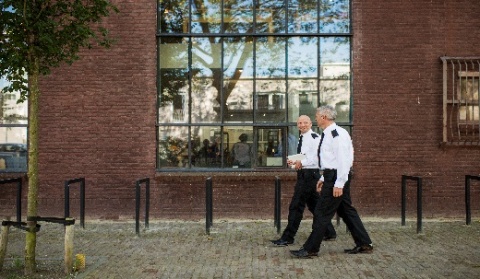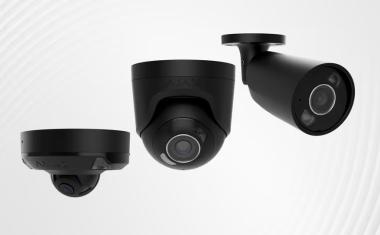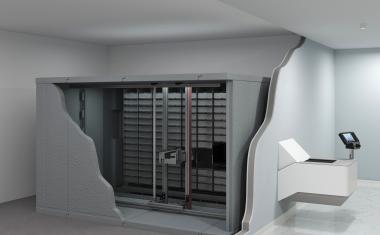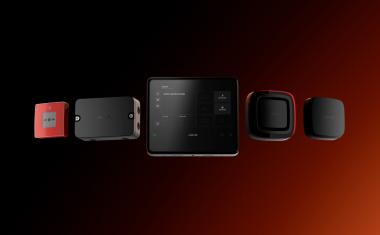Making video surveillance more relevant

Rapid technological progress drives the video surveillance industry into the era of Big Data. Higher resolutions, higher frame rates, excellent dynamic ranges, and better light sensitivity are key when it comes to capturing images that can distinguish individuals or objects for irrefutable evidence around the clock.
At the same time, the amount of data is getting larger by the minute: As of 2015, the world's video surveillance cameras capture more video data within one single hour than the entire sum of TV programs in the archives of the British Broadcasting Corporation (BBC). What's more, surveillance video now accounts for 65% of all global Big Data available for analysis.
But here lies the problem. According to a recent report by Big Blue, over 90% of all collected data is never analyzed or acted upon, although large amounts could potentially be relevant. To make sense of this flood of data, security operators increasingly rely on video content analysis software to automatically detect threats, register security breaches and monitor critical infrastructure – thereby shifting the focus on relevant data.
A paradigm shift: Relevant data instead of Big Data
Responding to this trend, Bosch makes a long-term commitment to relevant data. Known as a pioneer of advanced camera technologies – including light-sensitive (low light) starlight cameras, 4K ultra HD technology and dynamic ranges up to 120 dB – the company will continue to deliver the resolution, light sensitivity, frame rate, dynamic range and form factors that suit customers’ needs.
But to fully support security and non-security applications in the era of Big Data, Bosch is also committed to adding sense and structure to data by implementing video analytics at the edge – pre-loaded into cameras – as a standard feature starting in June 2016.
It's a paradigm shift driven by an essential insight: The industry's focus on image quality is not longer enough. Users also need the ability to focus on relevant data and easily extract relevant information from it – and do so in a way that suits their applications. For Bosch, adding video analytics at the edge as standard, with no extra investment or license fees, is the way forward.
Why add video analytics at the edge?
The upsurge in video data not only has operators scrambling to make sense of available information, it also costs money. This can be measured by the rapid growth of the global data storage market, a booming industry projected to grow at a CAGR 22% to $18.28 billion by 2020.
In this context, video analytics at the edge supports strategies to reduce the amount of stored data. Edge video analytics (video analytics built into the camera) add sense and structure to video data, using metadata to enable the camera to understand what it sees. In effect, the camera becomes ‘smart’ so users have the choice to control which and how much data streamed by the cameras is stored.
Users can also configure specific rules for what kind of behaviors and events an alarm needs to be triggered to alert security personnel only when needed. Users can instantly retrieve the correct data from hours of stored video because metadata is much easier and quicker to search through than the video data. What’s more, video content analysis is conducted on the raw data, meaning there are no quality losses due to compression, encrypting or other techniques.
Coming in June 2016: Video analytics at the edge as standard feature
Supporting this strategy at the product level, Bosch will offer video analytics at the edge as a standard feature, rather than an option, in the next 12 months, also at the mid-price range.
Users can choose from two types of Bosch video analytics at the edge: Essential Video Analytics and Intelligent Video Analytics.
Essential Video Analytics, introduced in the DINION IP starlight 6000 fixed box and FLEXIDOME IP starlight 6000 fixed dome cameras as standard, can be used for advanced intrusion detection, as well as enforcing health and safety regulations (e.g. parking in a restricted area or a blocked emergency exit). However, it also possesses business analytics capabilities for retail environments, such as people counting and crowd detection.
Taking capacities a step further, Intelligent Video Analytics features all the capabilities of Essential Video Analytics, plus specifically designed functions for the world's most demanding environments. It delivers the required level of accuracy for mission-critical applications such as perimeter protection for airports and critical infrastructures as well as traffic monitoring.
What makes Intelligent Video Analytics stand out is its ability to differentiate between genuine security events and known false triggers caused by challenging conditions such as weather effects (wind, heavy rain, snow), water reflections, and substantial shaking of the camera, thereby minimizing costly false positives.
Empowering users
While only five years ago, these video analytic capabilities were the domain of cutting-edge applications, Bosch midrange cameras from IP 4000 to IP 6000 will be equipped with Essential Video Analytics over the next 12 months. It's all part of empowering users to define their own (security) rules and triggers for their individual application needs (see use case scenarios).
In the bigger picture, adding ‘smart’ cameras to networks around the world is only the beginning: By using Bosch’s Interactive Application Learning, users can teach video cameras to support a wide range of security and non-security processes.
For example, cameras could be taught to detect empty parking spots in parking space management applications. Or cameras could automatically trigger an alarm when cars are parked incorrectly. Currently, a variety of civilian applications for Interactive Application Learning already deliver next-level business intelligence, for instance retail metrics.
Outlook
As the number of cameras – and the demand for more detail – continues to increase, video surveillance needs to advance into the era of Big Data. Bosch focuses on delivering relevant images through the ideal combination of light sensitivity, dynamic range and form factors – for various applications, under the most demanding conditions. In order to future-proof our customers’ investment in video surveillance solutions, we’ll be offering video analytics at the edge as a standard feature to help keep video data usable and manageable.
Talk to your Bosch service partner today to see the future of relevant video surveillance in the era of Big Data.
Bosch video analytics at the edge: Use case scenarios
Bosch's Essential Video Analytics and Intelligent Video Analytics offer the same intuitive interface to help users configure rules, based on applications and security needs. Here are some use cases for security and non-security scenarios:
Perimeter security
Intelligent Video Analytics automatically triggers alarms for someone climbing a fence, objects left in vicinity and also allows for intelligently tracking moving objects (cars).
Retail environments
Ward off shoplifters and detect unwanted behavior; obtain performance metrics by counting customers, tracking times of day with the most footfall and analyzing in-store behavior.
Traffic management
Count traffic, detect cars stopped in emergency lanes and trigger alarms for cars parked in restricted areas.
Crowd control
Count people, monitor irregular crowd activity in protected areas or assembly of crowds in critical zones.
Forensic search
Powered by metadata, Essential Video Analytics and Intelligent Video Analytics provide event recognition during playback of recorded video, even for events not originally set up as alerts. With forensic search, users can review archived video using new detection criteria.















